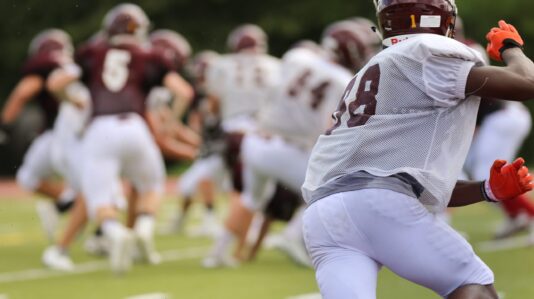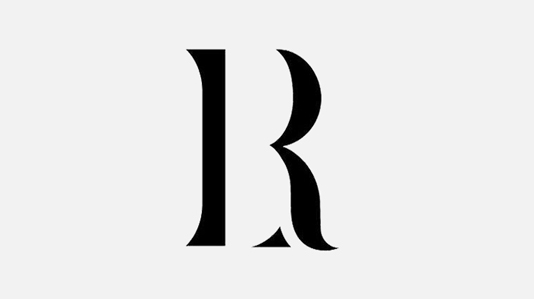
It is no secret that the National Collegiate Athletic Association (NCAA) oversees a very profitable business. The billions of dollars that college basketball and football programs generate on a yearly basis have had student-athletes clamoring for their fair share for decades. In 2019, the Fair Pay to Play Act was introduced and picked up steam after California Governor Gavin Newsom signed the bill into law. The Act would allow Californian student-athletes to receive compensation for their name and likeness as soon as 2023. California’s legislation is paving the way, with other states like Iowa and Georgia following suit. Most recently, Florida’s governor signed a bill similar to the Fair Pay to Play Act, that would allow college athletes to receive compensation for their name and likeness as soon as July 2021. About two dozen other states are considering similar legislation to apply pressure on the NCAA to quickly allow student-athletes compensation for their respective names and likenesses.
The NCAA Board of Governors announced its support for allowing student-athletes to profit in some way from third-party endorsements and social media deals, so long as none of that money was coming from the athlete’s respective university. However, the NCAA was supposed to vote on new name, image and likeness rules in early January of this year but have since paused the process in light of the Supreme Court announcing it will decide on a case concerning compensation limitations on student-athletes.
This is certainly not the first time that issue of “fair pay” for college athletes has been litigated, but the upcoming legal battle could have major ramifications for the landscape of college sports. The case pits the NCAA who claim to be protecting the idea of “amateurism” against student-athletes and a multitude of supporters who believe the NCAA’s rules violate the Sherman Antitrust Act.
A BRIEF HISTORY OF AMATEURISM IN COLLEGE SPORTS & THE SHERMAN ANTITRUST ACT
Amateurism is not a homegrown American ideal. British elites imagined amateurism when the peasants rowing on the River Thames started to regularly best the elites in competitive races. The British aristocrats fabricated a Greek history of amateurism and tied it to the notion of being a gentleman, claiming sports should be hobbies and not for making a living. The NCAA picked up this concept in the early days of summer baseball leagues. Summer vacation resorts used to pay college baseball players to play at their resorts as entertainment for the guests. The universities noticed and attempted to claim the students’ participation in summer baseball leagues rendered them ineligible.
However, when the universities formed the NCAA, the NCAA strictly interpreted an amateurism requirement in college sports. The NCAA originally denied college athletes’ ability to receive compensation in any form, including scholarships. But, until the enactment of the Sanity Code in 1948, the NCAA did not have the actual power to enforce the amateurism requirement. On the flip side, the Sanity Code allowed for college athletes to receive funds for college tuition and fees. Currently, there is constant temptation for college athletes to accept improper benefits from alumni boosters and sports agents. These “benefits” can include anything from new cars, like the rumors of Lebron James’ hummer to recent allegations that University of Tennessee football recruits received stacks of cash in McDonalds bags. Accepting said benefits can lead to wide-ranging penalties against a student-athlete, including suspension from college sports, forced charitable donations, and adverse impacts to the athlete’s future professional status. Violations of the amateurism requirement are often blurred, ranging from attending parties and failing to disclose relationships with professional athletes, to selling autographs and accepting cash from agents and boosters.
The Sherman Antitrust Act was enacted in the late-1800s in order to curtail restraints of free trade and economic competition. The Supreme Court has since decided that the Act does not prohibit every restraint of trade, but just those that are unreasonable. The NCAA has long relied on its amateurism rules being necessary in order to place more value on the athletes’ education and protecting against certain universities having an unfair advantage in terms of recruiting. The Supreme Court has even affirmed the NCAA’s stance as recent as 1984. Opponents of the NCAA’s practices have argued that its rules limiting athletes’ compensation to just scholarships are a restraint on trade in violation of the Sherman Act. A decision in favor of increased avenues of compensation for collegiate athletes would certainly be a landmark ruling, and a change of tune for SCOTUS.
Either way, the debate about compensation goes back to the paramount case, O’Bannon v. NCAA. At the time, current and former student-athletes challenged the NCAA’s bylaws that restricted players from licensing out their own name, image, and likeness. The lawsuit was brought by Edward O’Bannon Jr., claiming that the “amateurism” rules were a restraint of trade under the Sherman Act. The court held that although the plaintiffs failed to sufficiently identify harm under a rule of reason analysis, agreements among colleges not to offer football or basketball recruits more than full value of grant-in-aid for athletic services constituted a restraint of trade. Moreover, it was found that the NCAA’s “amateurism” argument was not enough to justify a “sweeping prohibition” on compensating players for use of their name, image, and likeness. The fallout from the O’Bannon decision led to similar actions in In re NCAA Student-Athlete Name & Likeness Licensing Litg. And Hart v. Electronic Arts. In these subsequent actions, the student-athletes argued that the Electronic Arts’ videogame NCAA Football misappropriated their names and likenesses. Specifically, in Hart, the court held that the video game set out to create realistic representations of the individual players. In fact, the Hart court concluded that the reason that NCAA Football was valuable was that it intended to create realistic versions of the players, which appealed to EA’s target market, thereby leading to higher sales.
Unfortunately for the student-athletes, due to the NCAA guidelines, these litigations never led to the players receiving money from the NCAA or their respective universities for improperly allowing the misappropriation of their names and likenesses. Now the players are on the cusp of not only being compensated for their names and likenesses but doing so without the involvement of the NCAA or their respective universities.
THE PUSH FOR STUDENT-ATHLETES TO BE RECEIVE COMPENSATION BEYOND UNIVERSITY TUITION AND FEES
Though the benefits of an athletic scholarship are considerable, so is the amount of money the NCAA earns off the talents of student-athletes. College sports is a multibillion-dollar enterprise, with the NCAA itself clearing an annual revenue of over a billion dollars. Further, in order to cash in at the professional level, most star athletes, particularly football and basketball players, are required to play college sports. Injuries are a major concern for student-athletes, particularly in college football, which is a violent sport where players must spend three years on campus before entering the NFL draft. As such, both student and professional athletes’ goal is earning an income for their talents as soon as possible. The introduction of bills allowing student-athletes to earn money off their name and likenesses creates a more immediate source of income for student-athletes.
Allowing student-athletes to be compensated for their extraordinarily abilities and hard work would also help to justify the enormous salaries that coaches at major universities earn. Take Nick Saban, the Head Coach of University of Alabama football team, who has climbed the ranks of the greatest coaches in college football history. Saban has done so on the backs of countless All-American student-athletes who were never paid a dime for their performance on the field, while their head coach earned a $9.3 million salary in 2020. Saban was not the only coach cashing a massive paycheck last year, as LSU’s Ed Orgeron, Clemson’s Dabo Swinney, and Michigan’s Jim Harbaugh each brought in over $8 million in 2020. Even more staggering, thanks to a buyout clause in Tom Herman’s contract, the University of Texas will be paying him $15+ million not to be their coach anymore.
Proponents of the Fair Pay to Play Act believe that student-athletes have an equal right to earn compensation for their services and to be paid for the use of their name, image, and likeness – just as professional athletes and any other workers do. Others, like former University of Florida star Quarterback, Tim Tebow, have been vehemently against compensation of college athletes, calling it a “slippery slope.” Tebow, who notes that his jersey was one of the highest-selling athletic jerseys in the world while he was in college, was perfectly fine not making any money from it, as that’s not what college was all about for him. On the opposing side, countless others have argued that it’s a lot easier affording the costs of college when you come from a privileged upbringing, like Tebow.
The Supreme Court’s ruling has the potential to be a major win for star athletes. While hard to determine considering how long college athletes have not been able to profit off their own name, image, and likeness, endorsement revenue estimates for 2019 amounted to $700,000 for LSU’s Joe Burrow, $440,000 for Alabama’s Tua Tagovailoa, $390,000 for Oklahoma’s Jalen Hurts and in the $5K – $30K range for other athletes. In 2016, the average value of a Duke Basketball player was $1.3 million and in 2017, the average University of Texas football player was worth $666,029 per year. In 2013, Texas A&M star football player Johnny Manziel brought the school an estimated $37 million in media exposure. However, the NCAA would not have allowed any of these players to receive any compensation for licensing their own image (whether in connection with their collegiate career or not). In practice and in purpose, the NCAA’s rules were created to maximize profits for the NCAA and its member schools rather than to protect student-athletes.
THE NEW LAW MAY ALSO ENCOURAGE MORE YOUNG ATHLETES TO PURSUE COLLEGE DEGREES
New NCAA rules could have the added effect of enticing athletes to go to college and once there, stay longer. This could help to curb the recent phenomenon of young basketball players choosing to play overseas, rather than going to college. Take RJ Hampton for example, a recent NBA draftee of the Denver Nuggets, who played for the New Zealand Breakers of Australia’s National Basketball league and turned down offers from prominent college programs like Kansas and Memphis. For Hampton, his dream was never to be a college basketball player, but to play in the NBA – so why not play professionally in Australia for a year at almost $70,000 in salary and be able to sign endorsement deals before declaring for the NBA draft?
REGARDLESS, THIS IS MORE THAN ‘JUST A SPORTS ISSUE’
The world of college sports seems to be weighing in favor of allowing student-athletes to be properly compensated. In the words of California Senator Steven Bradford, “this is more than a sports issue.” For decades, young athletes have generated billions of dollars for their colleges, universities and corporate sponsors without getting their fair share. Student-athletes do not endure normal college lives and the time to change a fault in the history of sports has arrived.
CONTACT AN ATTORNEY TODAY
The experienced attorneys at Romano Law are ready to help. Contact us at 212-865-9848 or complete this form to speak to a member of our team!
Photo by Max Winkler on Unsplash



